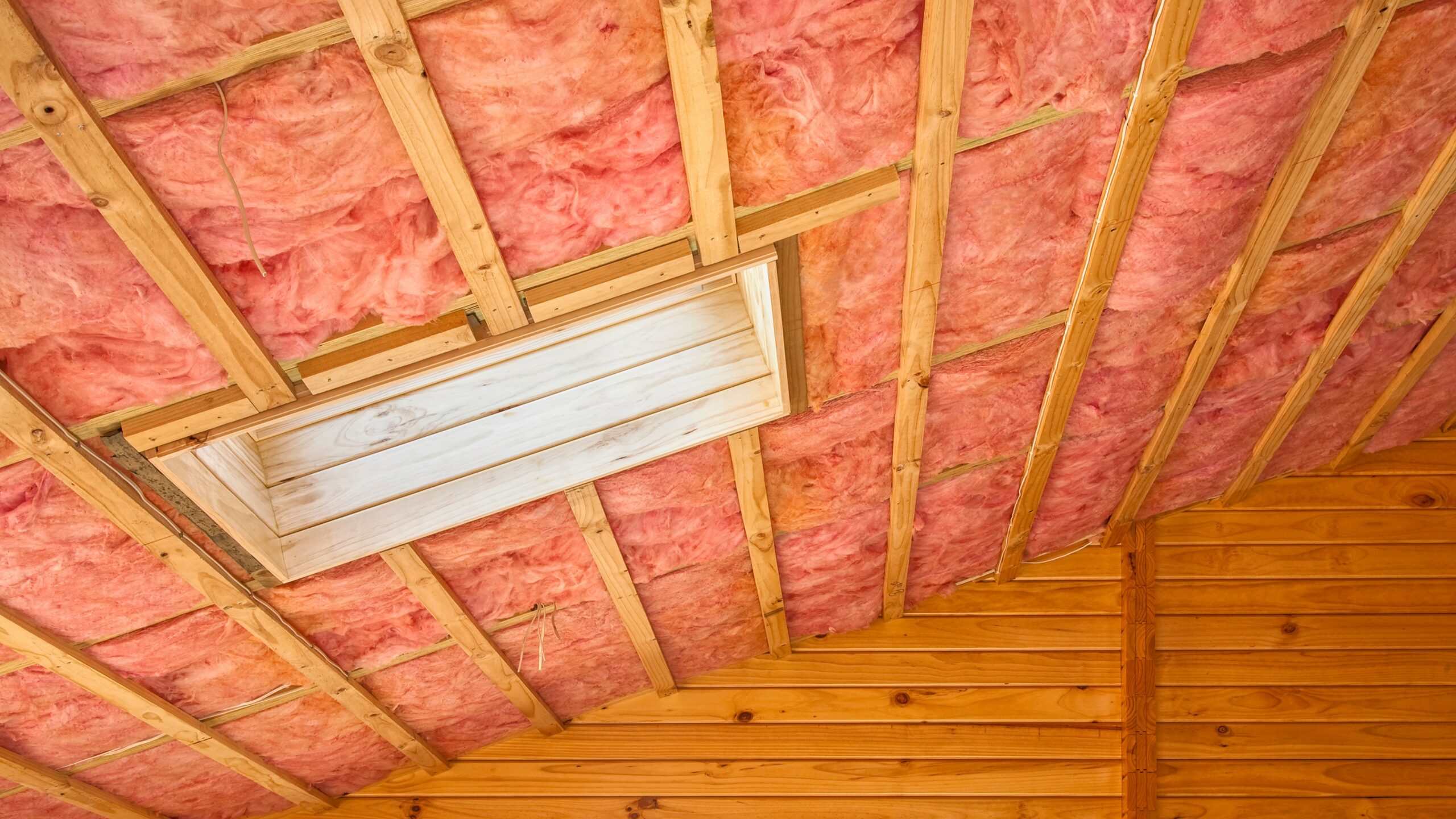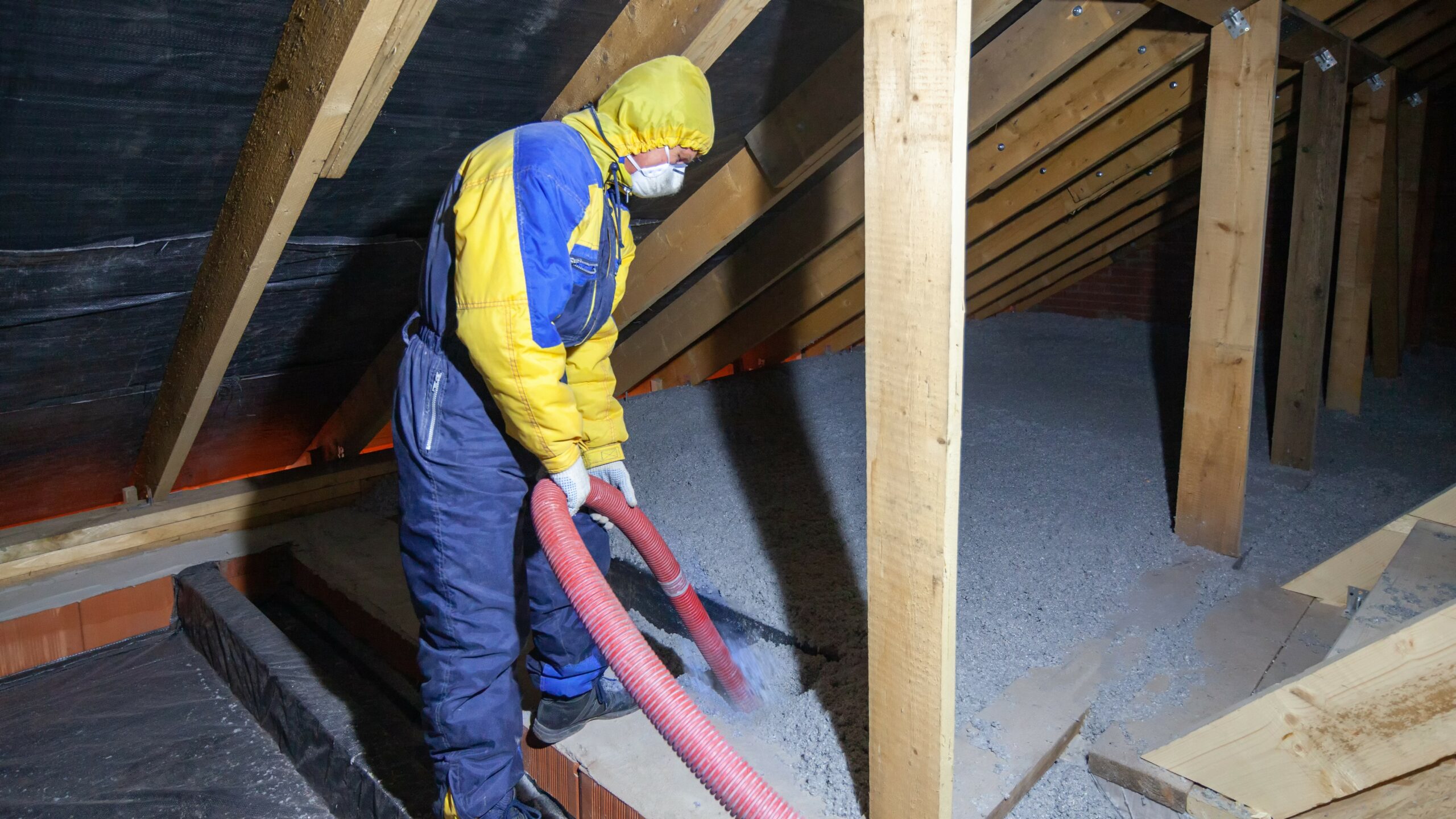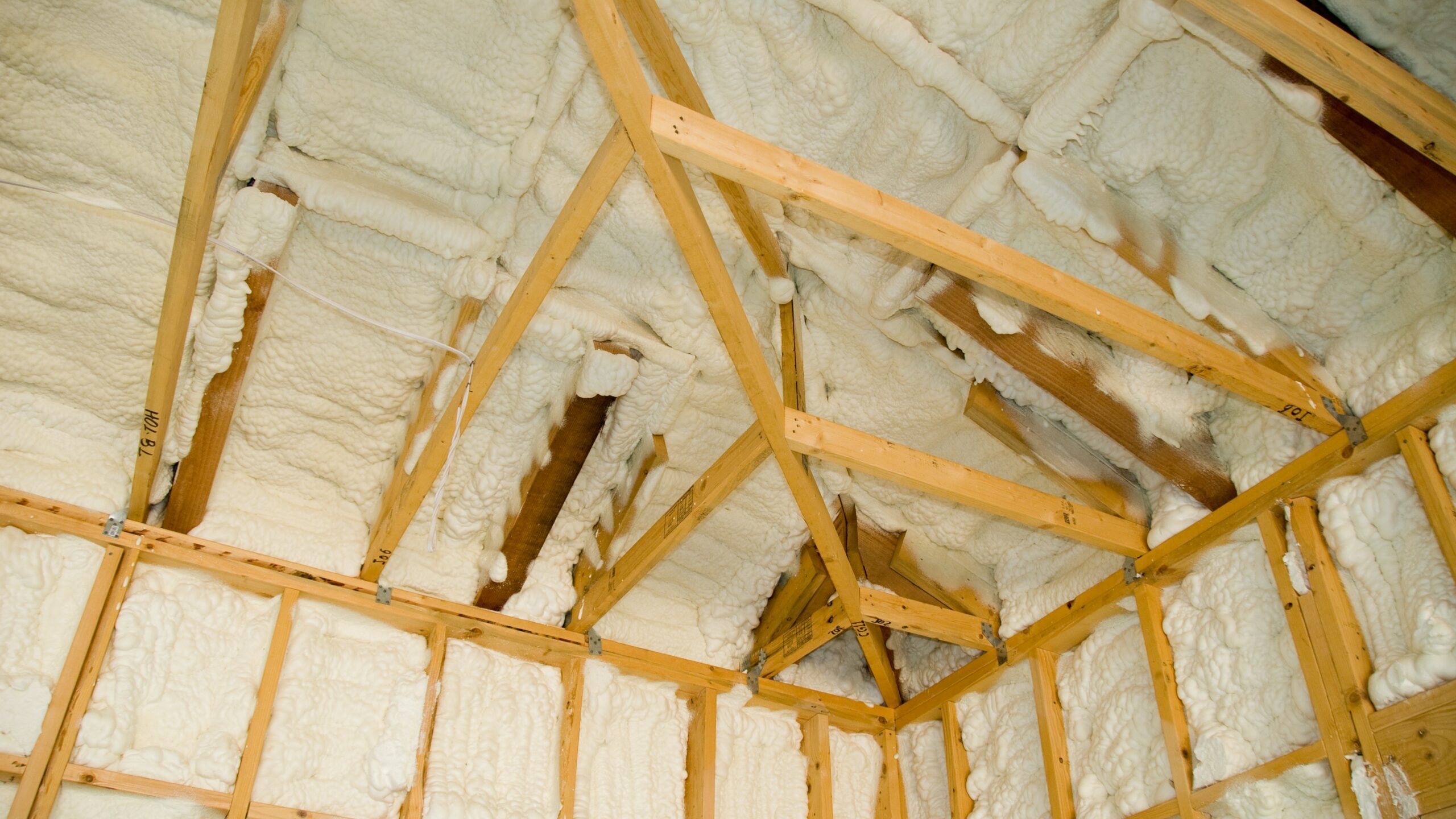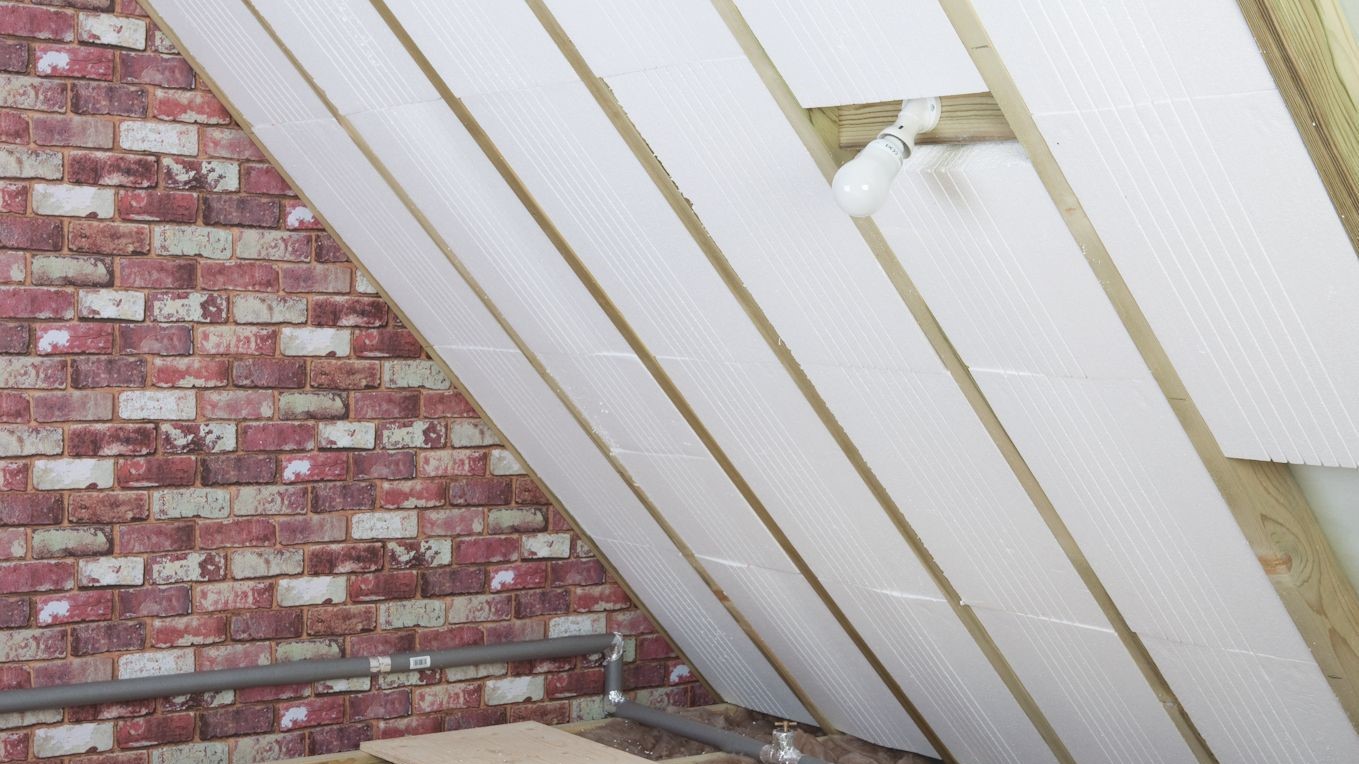When choosing roof insulation for your home, it's essential to consider how the insulation will maintain the temperature inside your home. Proper insulation will also help reduce your energy consumption and utility bills. By selecting the best types of roof insulation for residential roofing, you create a barrier that will keep your home cool in summer and cozy in winter.
The best types of roof insulation for residential roofing are fiberglass, cellulose, spray foam, and foam board. Insulation is a crucial component of residential roofing. Each of these different insulations plays a vital role in maintaining a comfortable indoor environment of a house.
Choosing the insulation that best suits your needs can be a daunting task. Whether you prefer the traditional fiberglass style or the more modern options like foam board and spray foam insulation, we provide a breakdown of the best options for residential roofing.
Types of Roof Insulation for Residential Roofing
The different types of roof insulation act as the barrier between the inside of your home and the external elements. It prevents heat transfer from inside your house from escaping or entering, which helps reduce the energy cost due to constant heating and cooling to regulate the house's interior.
Each type of roof insulation offers you unique advantages that are suitable for different applications and climates. Proper installation is crucial for achieving energy efficiency and maintaining indoor comfort.

Fiberglass Insulation
Fiberglass insulation is a thermal insulation that is commonly used in a wide range of buildings. It's a popular choice in residential roofing and is known for its effectiveness in preventing heat transfer. It is made from fine glass fibers bonded to form rolls or batts, which can be placed between roof joists or rafters. It also comes in loose fill to fit into any odd spaces.
HOW IT WORKS
Fiberglass insulation works by trapping pockets of air within its structure. These pockets of air create a barrier between the inside of your house and the external environment, which prevents temperature fluctuations, as air is a bad conductor of heat.
INSTALLATION
Fiberglass insulation is installed between the framing members of a structure, such as roof joists or wall studs. It is available in pre-cut batts or rolls, which fit snugly into the designated spaces. Proper installation is crucial to ensure maximum effectiveness.
R-VALUE
The R-value of fiberglass insulation typically falls in the range of R2.2 to R4.3 per inch of thickness.
ADVANTAGES
Cost–effective, versatile, and fire-resistant
Widely available and DIY–friendly

Cellulose Insulation
Cellulose insulation is a type of thermal insulation material made from recycled paper fibers, primarily newspaper, which are processed to become finely shredded or ground into a fluffy, lightweight material and treated with fire-retardant chemicals to enhance its safety and effectiveness as an insulation material.
HOW IT WORKS
Cellulose insulation works by creating a barrier that inhibits the transfer of heat. The tiny paper fibers trap air pockets within the insulation, providing thermal resistance. This trapped air is an effective insulator, slowing the movement of heat through the material.
INSTALLATION
Cellulose insulation can be applied by blown or sprayed methods into tight spaces or cavities, large attic spaces, or other areas that are hard to get into. It can be used as loose fill insulation, allowing it to conform to the shape of the cavity and fill gaps effectively. Professional installation is recommended to ensure even distribution and proper density.
R-VALUE
The R-value of cellulose insulation typically falls in the range of R3.2 to R3.9 per inch of thickness.
ADVANTAGES
Environmentally Friendly and energy Efficiency
Fire Resistance and Sound Dampening
Effective Air Sealing

Spray Foam Insulation
Spray foam insulation is a versatile and highly effective thermal insulation material used in residential roofing and various building applications. Spray foam insulation is made when these two liquid components are mixed together:
Polymeric Isocyanate: This component is often referred to as the A-side. It contains chemicals like methylene diphenyl diisocyanate (MDI).
Polyol Resin: This component is known as the B-side. It contains a mixture of polyols, fire retardants, and blowing agents.
HOW IT WORKS
Spray foam insulation works by rapidly expanding upon application. This is caused by a chemical reaction when the two components for sides A and B are mixed, producing a foam that expands and sticks to the surfaces. This foam then hardens, sealing gaps and crevices, which creates an airtight barrier.
Spray foam comes in two types of insulation: open-cell and closed-cell spray foam insulation. Each has advantages and is selected based on your specific requirements and needs.
Open-cell spray foam is lightweight and has a lower density. It is known for its flexibility and ability to allow moisture vapor to pass through. Open-cell foam is often used for interior insulation.
Closed-cell spray foam is denser and more rigid. It offers superior thermal insulation and acts as a moisture barrier. Closed-cell foam is suitable for interior and exterior applications and is commonly used in residential roofing.
INSTALLATION
Spray foam insulation is applied by trained professionals using specialized equipment. However, there are DIY kits for those who feel capable of handling the job. It's sprayed directly onto surfaces, expanding to fill cavities and gaps. The installation process requires precision to ensure even coverage and proper thickness.
R-VALUE
The R-value can vary depending on the specific formulation and thickness of the spray foam applied. Generally, closed-cell spray foam insulation has a higher R-value than open-cell spray foam.
Closed-cell spray foam typically has an R-value ranging from approximately R6 to R7 per inch of thickness. While open-cell spray foam has a slightly lower R-value, typically ranging from about R3.5 to R4.5 per inch of thickness.
ADVANTAGES
High R-value
Versatility and longevity
Air Sealing
Moisture resistance and energy efficiency

Foam Board Insulation
Foam board insulation, also known as rigid foam insulation, is a type of thermal insulation material commonly used in residential roofing and various construction applications. It is known for its rigidity and ability to provide effective thermal resistance. Foam board insulation is typically made from polystyrene, polyurethane, or polyisocyanurate.
HOW IT WORKS
Foam board insulation is made from rigid foam materials. The three primary types are:
Polystyrene: Expanded polystyrene (EPS), made from expanded polystyrene beads, and extruded polystyrene (XPS), is made by extruding polystyrene foam into rigid boards. Both of these are common types of foam board insulations.
Polyurethane (PU): Polyurethane foam board insulation is composed of closed cells that provide excellent thermal resistance. It is often used in structural insulated panels (SIPs).
Polyisocyanurate (Polyiso): Polyisocyanurate foam boards are known for their high R-value. They are commonly used in commercial roofing but are becoming increasingly popular for residential roofing.
INSTALLATION
Foam board insulation is used in various applications. It can be installed on the roof deck in residential roofing to provide insulation and reduce heat transfer.
R-VALUE
Typical R-values range from R-3 to R-6 or higher per inch, making foam board insulation an effective thermal insulator.
Polystyrene R-values range from R3.8 to R5.5
Polyurethane R-values range from R5.5 to R6.5
Polyisocyanurate R-values range from R5.6 to R8.
ADVANTAGES
High R-value
Rigidity, versatility, and longevity
Moisture resistance and air sealing
Understanding R-Value in Roof Insulation
Different materials have varying R-values, which is the ability of the material to allow temperature fluctuations in a building by preventing heat transfer between internal and external environments. Simply put, the higher the R-value of a material is, the better its ability to insulate against temperature fluctuations.
Factors to Consider when Choosing Roof Insulation
It's critical to consider some of these factors before choosing a residential roof insulation material to make an informed choice.
R-Value
Consider the climate in your area and choose insulation with an appropriate R-value to suit your location.
Metal Compatibility
Consider the compatibility of the insulation material with your roof type and structure. Some insulation materials may require additional support or modifications to ensure proper installation and performance.
Moisture Resistance
Moisture is a huge culprit and can cause significant damage to your roof and insulation. Choose insulation materials with good moisture resistance to prevent mold growth, rot, and other moisture-related issues.
Fire Resistance
Check if the insulation material has adequate fire-resistant properties. Fire safety is crucial, especially in areas prone to wildfires or where local building codes require specific fire ratings.
Installation Method
Consider the complexity and ease of installation. Some insulation materials require professional installation, while others can be installed as a DIY project.
Cost and Energy Savings
Evaluate the cost of the insulation material and weigh it against the potential energy savings it can provide. (Related: Energy Efficient Roofing: What Homeowners Need to Know Before Making a Deposit)
Environmental Impact
Consider the environmental impact of the insulation material. Opt for eco-friendly options that are made from recycled materials or have minimal environmental impact.
Final Thoughts
When choosing the best types of roof insulation for residential roofs, it's vital to consider the factors that can significantly enhance energy efficiency and the overall comfort of your living space. These will help you evaluate the right choice and reduce your utility bill.

